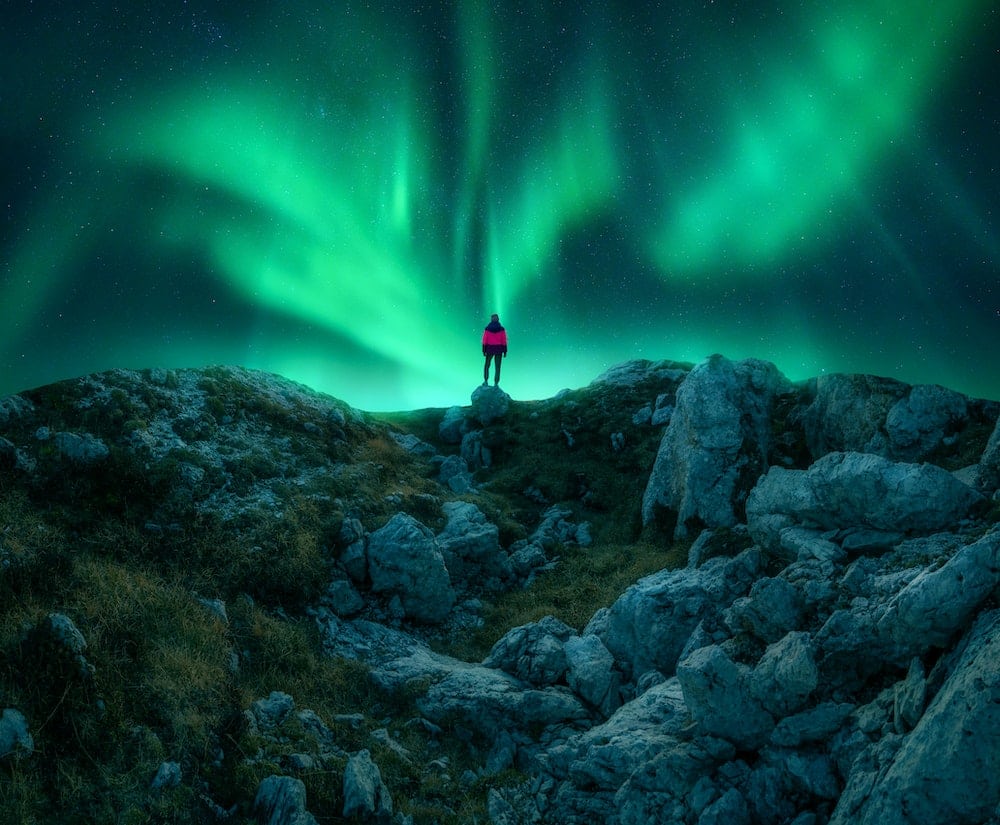When considering the best places to catch a glimpse of the Aurora Borealis, or Northern Lights, Scotland often comes to mind for many travelers. The country’s northern regions provide some of the most advantageous points in the world to view this astronomical spectacle. However, it’s not as simple as just heading north and looking skywards; finding the Aurora requires certain conditions, patience, and a little bit of luck.
In this guide, we’ll explore the optimal locations throughout Northern Scotland to see the Aurora Borealis, understanding what makes each place unique, and why the Northern Lights choose to dance across their skies more frequently than others.
Cela peut vous intéresser : Where can you learn about Elizabethan theater practices in Stratford-upon-Avon?
The Isle of Skye and its Dark Sky Park
As one of Scotland’s most northerly points, the Isle of Skye is a prime location for viewing the Northern Lights. But what makes this location truly special is its status as a designated Dark Sky Park.
This is a coveted recognition given to places worldwide that maintain a pristine night sky, free from artificial light pollution. This absence of light interference allows for a clearer view of the night sky, offering an unparalleled vista of the Aurora Borealis when conditions are right.
Lire également : Elevate your travel game: smart tips for effortless journeys
The Isle of Skye boasts several ideal locations to view the night sky. The remote Quiraing mountains, the ancient Dunvegan Castle, and the tranquil Neist Point Lighthouse all provide dramatic backdrops against which the Northern Lights perform their ethereal dance.
The Shetland Isles and the Magnetic North
Further north than the mainland of Scotland, the Shetland Isles sit closer to the Magnetic North than any other part of the British Isles. This makes it one of the best places in the UK to see the Aurora Borealis.
The Magnetic North plays a crucial role in the appearance of the Northern Lights, as solar particles are drawn towards it, creating the light spectacle we see in the sky. The closer to the Magnetic North you are, the better your chances of seeing the Aurora.
In addition, the Shetland Isles offer minimal light pollution, allowing for a clear view of the night sky. The coastline provides wide, open spaces perfect for settling down with a blanket and a hot drink as you keep an eye out for the elusive lights.
The Northern Highlands and Their Winter Sky
The Northern Highlands of Scotland are known for their rugged landscapes, remote locations, and, importantly, their dark winter skies. Winter is a particularly good time to view the Aurora Borealis because the long nights and clear skies offer optimal viewing conditions.
Locations such as Caithness, Sutherland, and Ross offer unspoiled views of the night sky. Moreover, the area boasts multiple cozy cottages that can provide warmth and comfort as you wait for the show to begin.
These cottages often have large windows and outdoor hot tubs, both perfect for sky gazing. It’s not uncommon for guests to witness the lights dancing across the sky from the comfort of their accommodations.
The Outer Hebrides and Their Solar Activity
Lastly, the Outer Hebrides has a well-earned reputation for being one of the best places in Scotland to see the Northern Lights. This is due to its northern location and exposure to significant solar activity.
The Aurora Borealis is created by solar particles entering the earth’s atmosphere and reacting with gases, resulting in the radiant display we see. Thus, areas with high solar activity increase the likelihood of the phenomenon occurring.
The Outer Hebrides, a chain of islands off Scotland’s west coast, are ideally placed to capitalize on this. Lewis, the largest of these islands, is particularly notable as it offers vast expanses of open, dark sky for optimal viewing opportunities.
Remember, witnessing the Aurora Borealis is never guaranteed, no matter where you are. It requires patience, suitable conditions, and a little bit of luck. However, the places mentioned in this guide are widely considered to offer some of the best opportunities to see the Northern Lights in their full glory. Happy stargazing!
Cairngorms National Park and its Expansive Dark Sky
One of the largest national parks in the UK, Cairngorms National Park, often gets overlooked as a prime spot for viewing the Aurora Borealis. The park’s vast expanse, high altitude, and minimal light pollution give it a somewhat competitive edge.
The park’s topography, with its high plateaus and deep valleys, helps block out light pollution from nearby settlements, ensuring a clear and dark sky. The high altitude of the Cairngorms also means that there’s less atmosphere to obscure the view, making the northern lights appear even more vibrant when they do show up.
In addition, a visit to the Cairngorms offers the chance to experience some of the UK’s most stunning wilderness. During the day, you can explore the park’s mountains, forests and lochs, then settle down at night in one of the park’s secluded spots, and gaze up at the stars.
The Cairngorms even has its own Dark Sky Park, the Tomintoul and Glenlivet – Cairngorms Dark Sky Park, recognized as one of the best places in the world to stargaze. When the solar activity is high, this park offers some of the best chances in Scotland to see the Northern Lights.
International Dark Sky Association and its Importance in Preserving Dark Skies
The International Dark Sky Association (IDA) is a non-profit organization that plays a pivotal role in preserving dark skies worldwide. By bestowing the title of ‘Dark Sky Places,’ the IDA helps to protect the night sky from light pollution, thus preserving areas ideal for stargazing and viewing phenomena like the Aurora Borealis.
There are several types of Dark Sky Places, including reserves, parks, and communities. These locations have demonstrated exceptional commitment to preserving the night sky through the implementation of quality outdoor lighting and public education.
Scotland is home to two such places recognized by the IDA: the previously mentioned Isle of Skye and the Tomintoul and Glenlivet – Cairngorms Dark Sky Park. The recognition by the IDA emphasizes these areas’ importance for astronomical observations, including viewing the Northern Lights.
The work of the IDA, in conjunction with the efforts of local communities, ensures that Scotland continues to offer some of the best opportunities for viewing the Northern Lights. By reducing light pollution and promoting the importance of dark skies, more people will have the chance to witness the ethereal beauty of the Aurora Borealis.
Conclusion
Northern Scotland is undoubtedly one of the best places in the world to witness the Aurora Borealis. The region’s northerly latitude, coupled with minimal light pollution and significant solar activity, creates prime conditions for viewing this spectacular light show.
From the rugged landscapes of the Shetland Islands and the Northern Highlands to the serene beauty of the Isle of Skye and the Outer Hebrides, each location offers a unique backdrop against which to see the Northern Lights. The Cairngorms National Park, with its expansive dark sky, also provides a stellar viewing platform for the Aurora.
While the International Dark Sky Association’s work ensures that these beautiful dark skies are preserved for future generations, remember that seeing the Northern Lights is never guaranteed and requires patience, favorable conditions, and a touch of luck.
No matter where you decide to chase the Aurora Borealis in Northern Scotland, the journey will undoubtedly be as unforgettable as the destination. Whether you’re tucked up in a cozy cottage in the Highlands or camped out under the stars in the Outer Hebrides, witnessing the Northern Lights is sure to be a magical experience.











